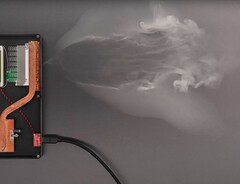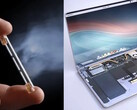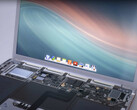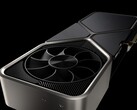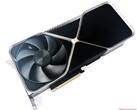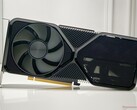Solid-state cooling was borderline unheard of in the consumer electronics space not that long ago. However, Frore Systems changed that, with the introduction of its AirJet cooler, which utilized piezoelectric tech to generate airflow over a heat sink. However, that technology was rather problematic to incorporate into laptops for a multitude of reasons. Now, a different company by the name of Ventiva wants to tackle the issue of solid-state cooling using a completely different method.
But before we dive into that, let us first revisit the impediments of the Frore Systems' AirJet product that held it back from being a success. When it comes to laptop cooling, three factors are the most consequential — noise, efficiency, and price. The AirJet was relatively quiet, but was rather expensive and inefficient, which made its integration into laptops unfeasible. Ventiva's alternative, which uses ionic propulsion to circulate air over the heat sink, is far more efficient and quieter. In fact, YouTuber Dave2D has revealed that a 'well-known' company will introduce a new laptop utilizing Ventiva's tech, which it calls ICE, at CES 2025. However, there are a few major downsides that must be considered.
First and foremost, and rather hilariously, the ionic thrusters are as sensitive to dust as a neat freak in a sandstorm. The thing is, ionic thrusters rely on precise electrical fields, which can be disrupted by dust accumulation. Moreover, ionizing air produces Ozone (O3), a potentially harmful byproduct that is not exactly welcome indoors. Ventiva claims to have solutions to both of these genuine concerns, using patented technology that is currently under wraps for the former issue, and utilizing a manganese dioxide (MnO2) catalyst that converts Ozone back to Oxygen. Ventiva, unsurprisingly, claims that its technology meets safety standards, although it might be hard to sway consumers.
But perhaps the most glaring limitation of Ventiva's solid-state cooling system is that it suffers from a poor static pressure rating of just 12 pascals, which is comically lower than laptop fans which have high static pressures of around 45 pascals. This allows them to pull in air through tight spaces, which is essential in, say, a thin and light laptop. To make use of the ICE technology's potential, laptop makers will have to entirely rethink internal layouts to optimize airflow and minimize resistance. This will inevitably boil down to higher prices for consumers, especially when considering that Ventiva's ICE cooling system is almost guaranteed to be substantially more costly to integrate than typical fans.
Either way, the future of any technology is extremely difficult to predict. If Ventiva's ICE cooling solution works well enough, it is only a matter of time before laptop makers rush to adopt it. After all, who doesn't want a silent system that dissipates heat as well as one with a fan?
Care deeply about quiet performance? Buy the impressively quiet M4 Mac Mini on Amazon, available for $579 at the time of writing.




